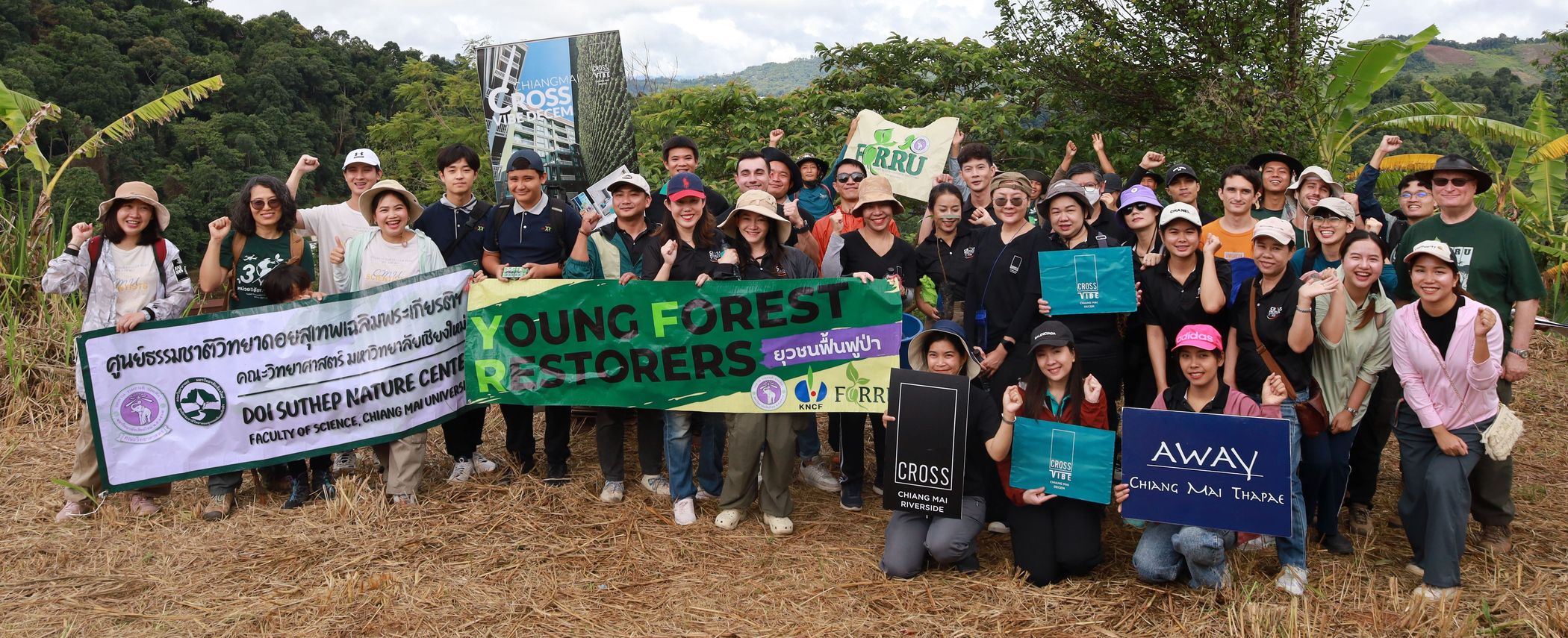Watershed forests are nature’s water towers. When upland farms are abandoned, these areas can become hot, dry and prone to erosion. Restoration is urgent—and innovative tools like cardboard mulching could help us speed up nature’s recovery.
The Forest Restoration Research Unit (FORRU) Chiang Mai University, in collaboration with the Nong Hoi Royal Project Development Center, Doi Suthep-Pui National Park and the Doi Suthep Nature Study Center, has initiated a forest-restoration project in the highland watershed areas above the Nong Hoi Royal Project Centre. Core funding for the first year of the project is being provided by the Plant Genetic Conservation Project under the Royal Initiative of Her Royal Highness Princess Maha Chakri Sirindhorn. This initiative aims to restore the ecological integrity of degraded montane forest ecosystems, promote biodiversity and encourage active participation from local communities, students, and the general public. At the same time, the project serves as a platform to promote natural science knowledge and sustainable natural resource management. Additional funding is being provided by SIG via the Rajapruek Institute Foundation , whilst Cross Hotels helped out on planting day.
This project serves as a model for cross-sectoral collaboration between governmental agencies and academic institutions. It integrates science-based forest restoration with community engagement to transform degraded landscapes into ecologically functional and socially valuable forests—addressing environmental, social and economic dimensions.
Project Objectives
- To restore 10 rai of degraded montane forest on 2 sites, previously used for agriculture, located in Mae Raem Sub-district, Mae Rim District, Chiang Mai.
- To enhance biodiversity and ecological resilience within the boundaries of Doi Suthep-Pui National Park.
- To plant 4,000 tree saplings and manage the sites for at least two years to ensure successful establishment.
Species Assessment and Target Areas
A rapid biodiversity assessment recorded the presence of a few naturally regenerating species prior to restoration. A total of 13 species were observed in low densities, for example Persea americana (Avocado), Fraxinus floribunda (Indian Ash), Prunus cerasoides (Wild Himalayan Cherry), Ficus spp and Pterocarpus macrocarpus (Burma Padauk), confirming the site's degraded state and the need for active restoration. Additionally, the terrain is steep (with slopes over 30 degrees), and signs of soil erosion and degradation are evident. The sites were largely open, densely covered with grasses and weeds exceeding 1–2 meters in height, and had very few natural tree saplings. The elevation was approximately 1,240 meters above sea level.
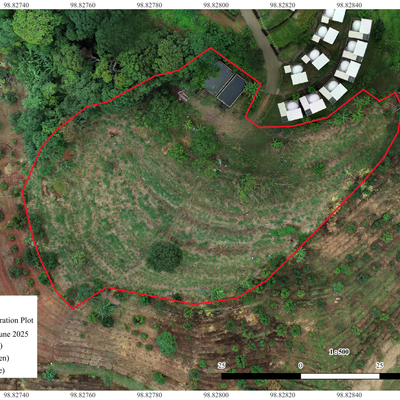
Restoration strategy
The restoration strategy follows the Framework Species Method, which involves planting a mix of 500 saplings per rai (roughly one every 1.8 meters), using a combination of fast-growing pioneer species and longer-lived climax species. Species selection is based on local ecological suitability and native flora.
After planting, the site will be maintained for at least two years with regular weeding and fertilization during the rainy season (three times per year). This ensures that saplings can grow to form a closed canopy, which will eventually suppress weed growth and promote natural forest regeneration.
Field Experiment: Cardboard Mulching Trial
In Site 1, one section was designated for an experiment testing cardboard mulching on seedling performance. Cardboard mulch should reduce weed competition and soil moisture loss—especially critical during dry periods—thus enhancing sapling survival and growth rates compared to the control group.
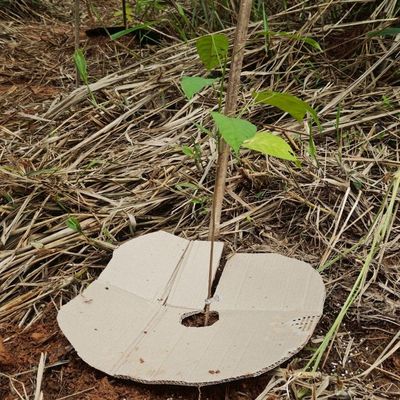
- Treatment group (500 seedlings): Cardboard mulch (radius 20 cm) was applied around each sapling.
- Control group (500 seedlings): Saplings were planted using the standard method without mulch.
The experiment will be monitored for two years, with growth and weed cover data collected regularly to assess the efficacy of mulching in highland forest restoration.
Results from the cardboard mulching experiment will provide valuable insights into cost-effective and scalable methods for forest restoration in similar landscapes across northern Thailand and beyond.
Enrichment Restoration Planting
The remaining section of the restoration site was planted with 500 additional saplings from 14 native species. Although not part of the formal experiment, this area aims to enhance biodiversity and structural complexity following the Framework Species Method.
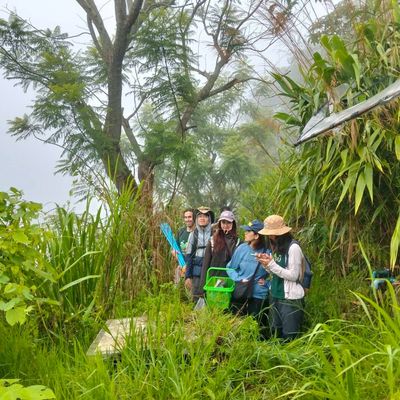
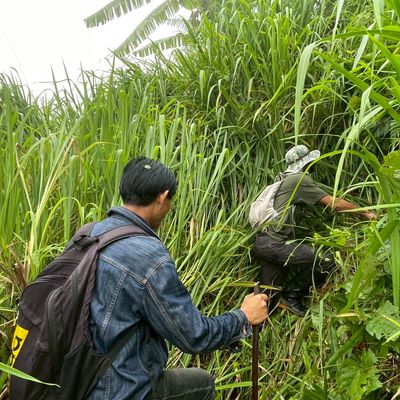
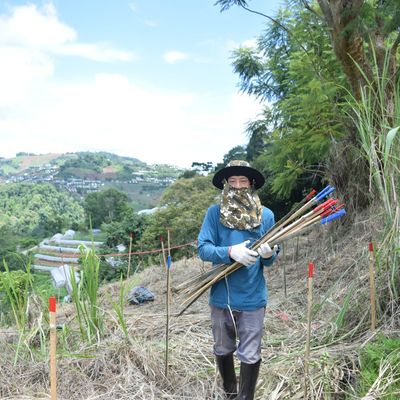
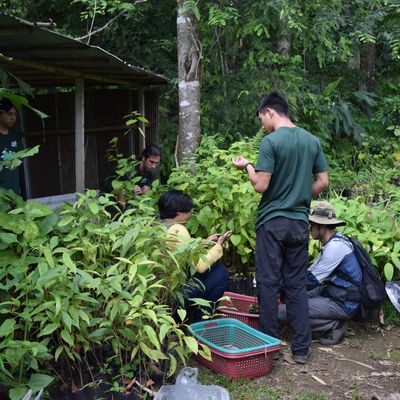
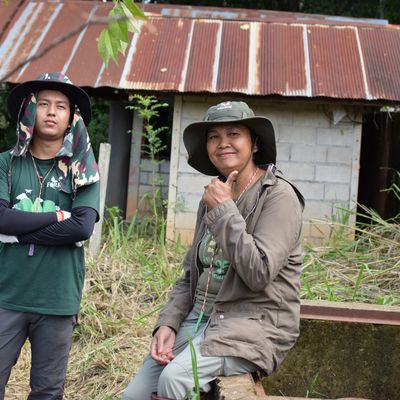
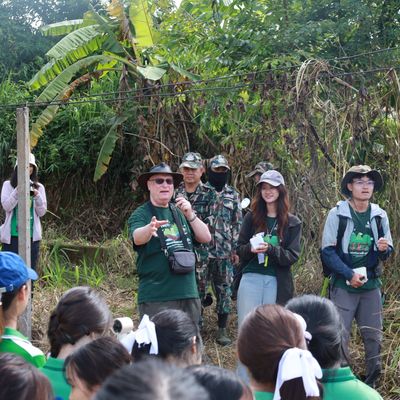
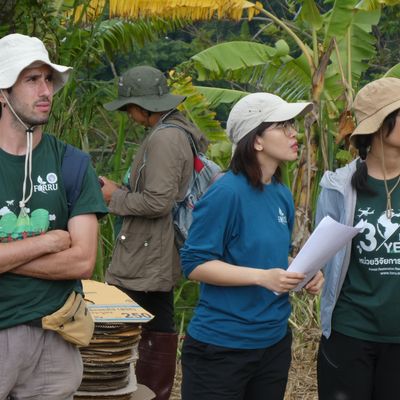
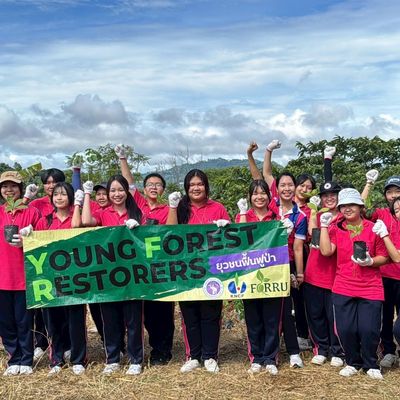
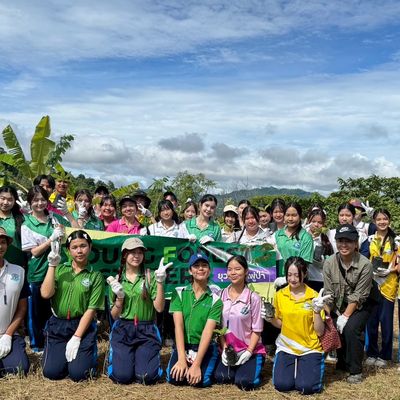
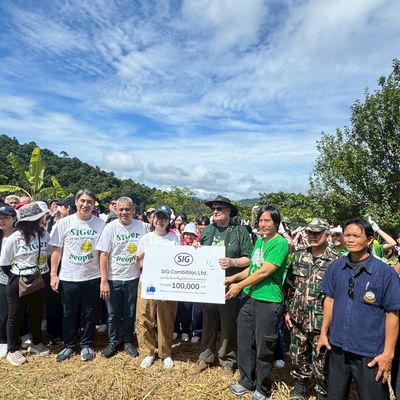
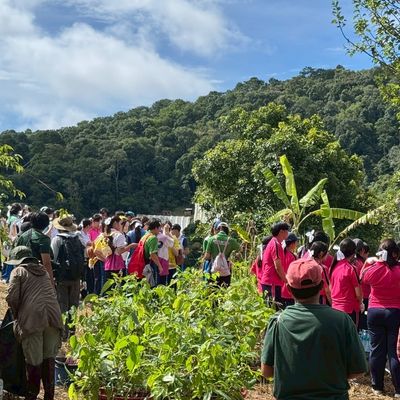
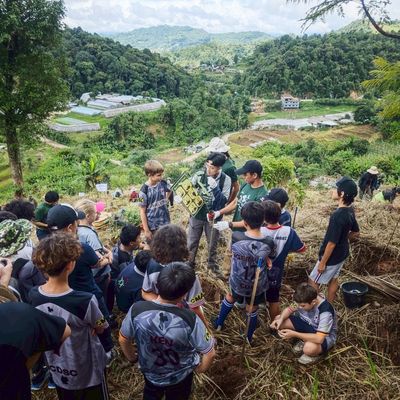
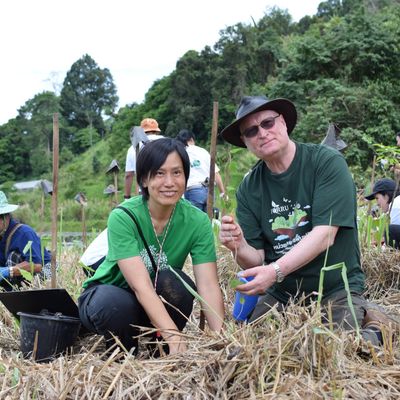
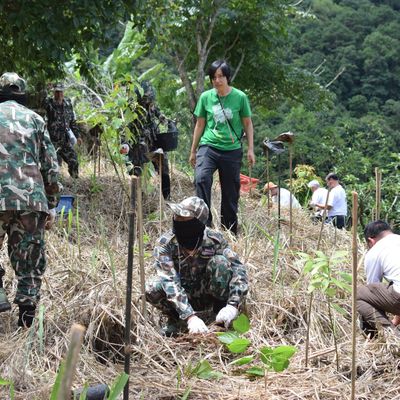
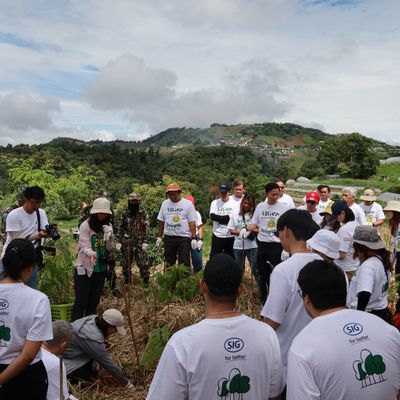
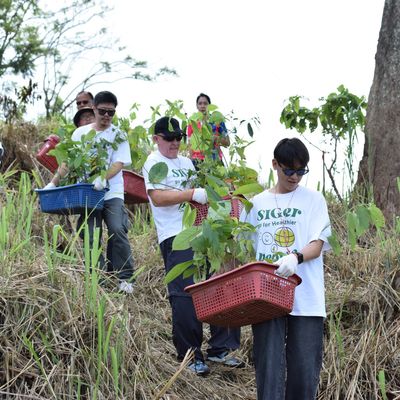
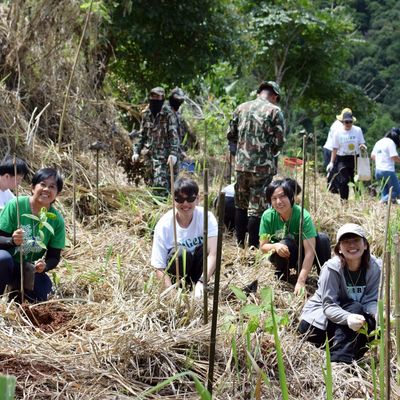
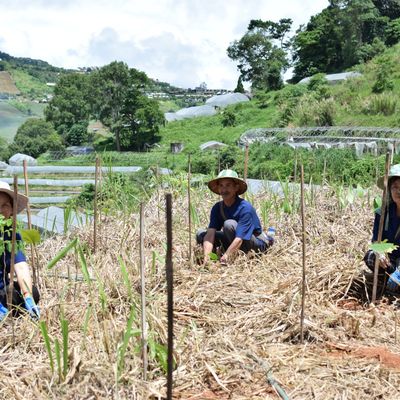
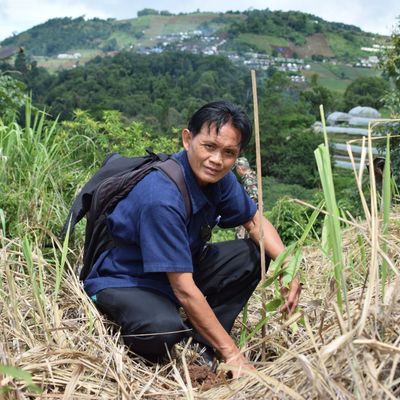
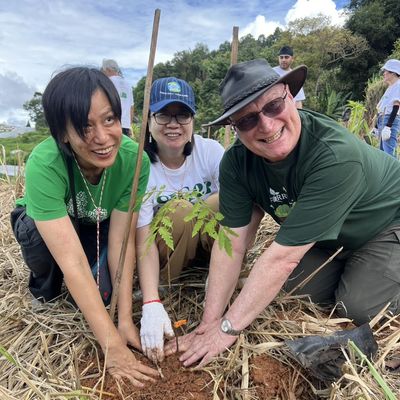
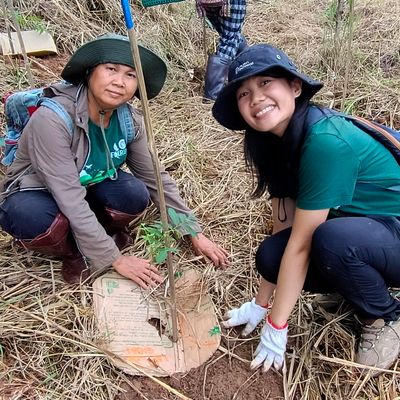
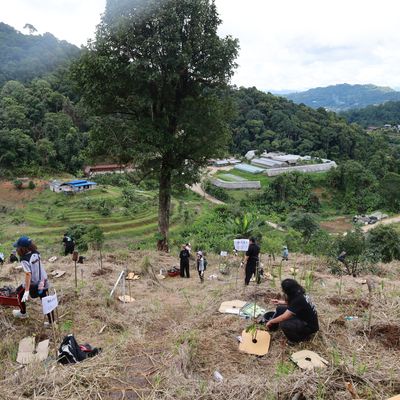
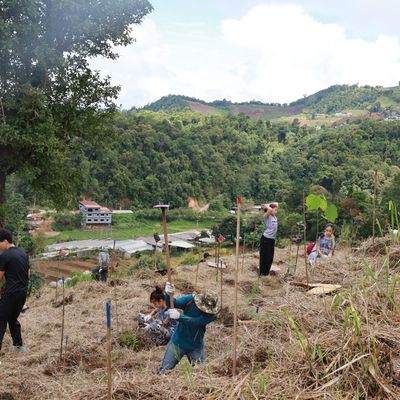
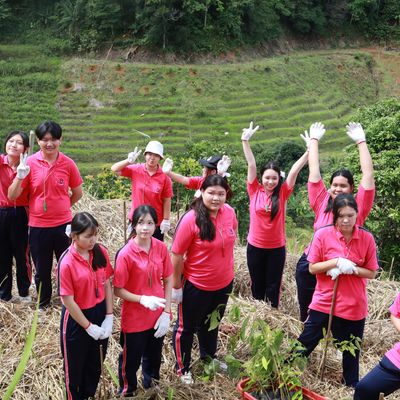
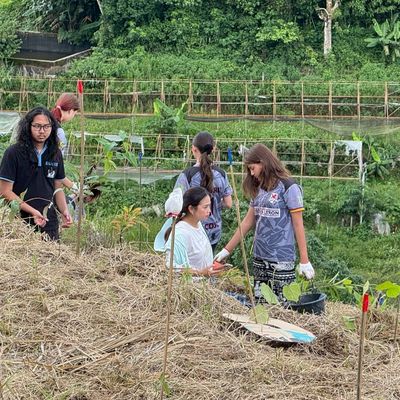
Highlights from planting day at Nong Hoi, June 12th 2025.

